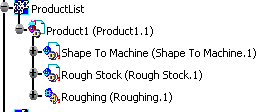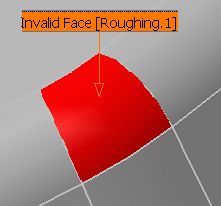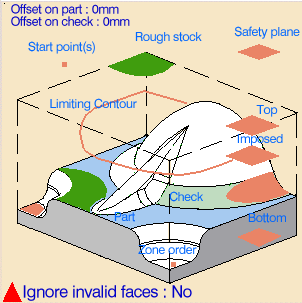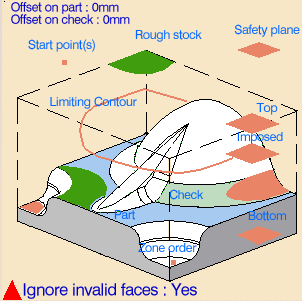-
Open file
SurfaceMachining3.CATProduct, then select Machining > Surface
Machining in the Start menu.
-
Then display the model in wireframe mode using the
View/Render Style/Customize View command:
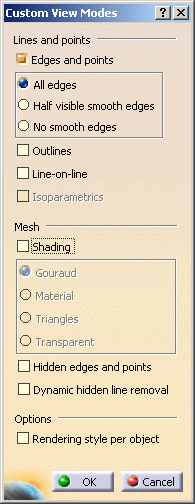
-
Click Roughing
 .
.
A roughing entity and a default tool area added to the program.
The dialog box opens at the geometry tab page
 .
.
This page includes a sensitive icon to help you specify the geometry to
be machined.
The red area in the sensitive icon represents the part geometry.
It is obligatory, as is the rough stock. All of the other parameters are
optional.
-
Click the red area in the
sensitive icon and select the part in the viewer.
Then double-click anywhere in the viewer to confirm your selection and
redisplay the dialog box.
-
Click the rough stock in the sensitive icon.
Select the stock in the viewer.
-
Click Replay to compute the operation.
You will see that the part has been rough machined.
A progress indicator is displayed.
You can cancel the tool path computation at any moment before 100%
completion.
-
If you want to
perform another roughing operation,
you can use the result of the above operation as
the rough stock for the next:
-
Click the Full Video icon ( )
and running the animation,
)
and running the animation,
-
Click the Save Video Result in a CATProduct
icon ( ),
),
-
Name the file Roughing and press Save.
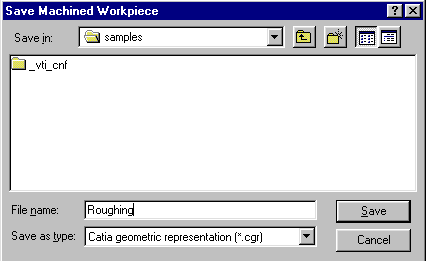
-
Close all of the dialog boxes.
-
Double-click Product 1 in the
tree and, using the contextual menu,
choose Components > Existing Component ...,
-
Browse to the right directory and choose
Roughing.cgr.
-
Double-click Part Operation in
the tree.
